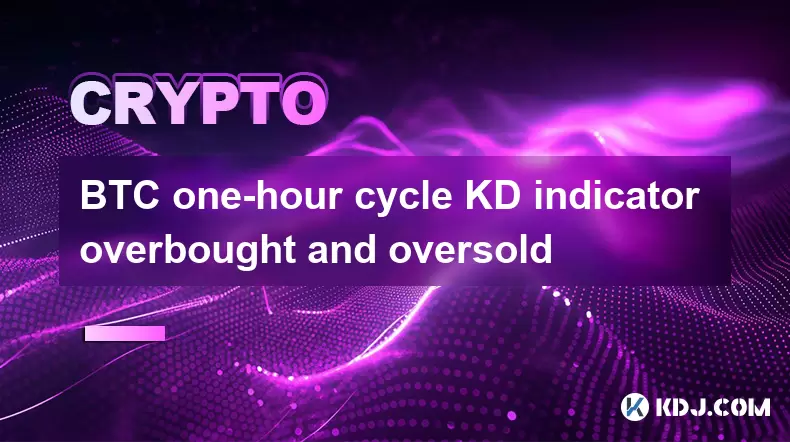-
 Bitcoin
Bitcoin $115100
1.27% -
 Ethereum
Ethereum $3675
2.71% -
 XRP
XRP $2.995
1.45% -
 Tether USDt
Tether USDt $1.000
0.02% -
 BNB
BNB $769.8
2.64% -
 Solana
Solana $168.0
3.25% -
 USDC
USDC $0.9999
-0.01% -
 TRON
TRON $0.3371
1.48% -
 Dogecoin
Dogecoin $0.2051
3.36% -
 Cardano
Cardano $0.7394
2.30% -
 Hyperliquid
Hyperliquid $38.15
0.42% -
 Stellar
Stellar $0.3966
-0.36% -
 Sui
Sui $3.486
2.93% -
 Chainlink
Chainlink $16.72
2.52% -
 Bitcoin Cash
Bitcoin Cash $568.0
4.36% -
 Hedera
Hedera $0.2440
2.59% -
 Ethena USDe
Ethena USDe $1.001
0.04% -
 Avalanche
Avalanche $22.16
2.06% -
 Litecoin
Litecoin $119.1
-0.73% -
 UNUS SED LEO
UNUS SED LEO $8.991
0.04% -
 Toncoin
Toncoin $3.232
-0.39% -
 Shiba Inu
Shiba Inu $0.00001233
2.82% -
 Uniswap
Uniswap $9.717
2.53% -
 Polkadot
Polkadot $3.664
1.85% -
 Dai
Dai $1.000
0.01% -
 Monero
Monero $281.2
-3.89% -
 Bitget Token
Bitget Token $4.350
1.55% -
 Cronos
Cronos $0.1428
5.07% -
 Pepe
Pepe $0.00001050
3.68% -
 Aave
Aave $262.3
3.54%
BTC one-hour cycle KD indicator overbought and oversold
The KD Indicator, useful for BTC one-hour cycles, signals overbought conditions above 80 and oversold below 20, aiding traders in making quick decisions.
Jun 05, 2025 at 01:21 pm

Understanding the KD Indicator
The KD Indicator, also known as the Stochastic Oscillator, is a popular momentum indicator used in technical analysis to identify overbought and oversold conditions in the market. It is particularly useful for traders looking to gain insights into potential price reversals. The KD Indicator consists of two lines: the %K line and the %D line. The %K line represents the current market rate compared to the high-low range over a given period, while the %D line is a moving average of the %K line, smoothing out its fluctuations.
Applying the KD Indicator to BTC One-Hour Cycles
When analyzing Bitcoin (BTC) on a one-hour cycle, the KD Indicator can provide valuable signals about the short-term momentum of the cryptocurrency. Traders often use this timeframe to make quick trading decisions based on the indicator's readings. The one-hour cycle is particularly relevant for those engaged in day trading or scalping, as it offers a more granular view of price movements compared to daily or weekly charts.
Identifying Overbought Conditions in BTC
An overbought condition in the context of the KD Indicator occurs when the %K and %D lines move above a certain threshold, typically set at 80. When the KD Indicator on a one-hour BTC chart reaches this level, it suggests that the recent price increase may be unsustainable and that a reversal or pullback might be imminent. Traders might consider this an opportunity to sell or take profits, especially if other technical indicators confirm the overbought signal.
Identifying Oversold Conditions in BTC
Conversely, an oversold condition is indicated when the %K and %D lines fall below a threshold, commonly set at 20. In the one-hour BTC chart, an oversold reading suggests that the recent price decline might be overdone, and a potential rebound could be on the horizon. This scenario might prompt traders to consider buying or entering long positions, particularly if other technical indicators also suggest a reversal.
Practical Application: Using the KD Indicator for BTC Trading
To effectively use the KD Indicator for trading BTC on a one-hour cycle, follow these steps:
- Select a reliable trading platform: Ensure you have access to a platform that supports technical analysis and offers real-time data for BTC.
- Add the KD Indicator to your chart: Navigate to the indicators section of your trading platform and select the Stochastic Oscillator (KD Indicator).
- Configure the settings: Set the %K period to 14, the %D period to 3, and the slowing period to 3, which are standard settings for the KD Indicator.
- Monitor the indicator: Keep an eye on the %K and %D lines. When they cross above 80, consider it a potential overbought signal. When they cross below 20, consider it a potential oversold signal.
- Confirm with other indicators: Use additional indicators such as the Relative Strength Index (RSI) or Moving Averages to confirm the signals provided by the KD Indicator.
- Execute trades: Based on the signals and confirmations, decide whether to buy, sell, or hold BTC.
Interpreting Divergences with the KD Indicator
Divergences between the KD Indicator and the BTC price can provide additional trading signals. A bullish divergence occurs when the BTC price makes a lower low, but the KD Indicator forms a higher low. This suggests that the downward momentum is weakening, and a potential upward reversal might be near. On the other hand, a bearish divergence happens when the BTC price makes a higher high, but the KD Indicator forms a lower high, indicating that the upward momentum is fading and a downward reversal might be imminent.
Fine-Tuning the KD Indicator for BTC
While the standard settings for the KD Indicator are effective, some traders might prefer to fine-tune the parameters to better suit their trading style or the specific volatility of BTC. For instance, shortening the %K period can make the indicator more sensitive to price changes, which might be useful for catching quicker reversals on the one-hour cycle. Conversely, lengthening the %K period can smooth out the indicator's movements, potentially reducing false signals but also delaying the recognition of genuine reversals.
Combining the KD Indicator with Other Tools
To enhance the effectiveness of the KD Indicator in trading BTC on a one-hour cycle, consider combining it with other technical tools. For example, support and resistance levels can help validate potential reversal points identified by the KD Indicator. Additionally, trend lines and chart patterns can provide context to the signals generated by the KD Indicator, offering a more comprehensive view of the market's direction.
Risk Management and the KD Indicator
While the KD Indicator can be a powerful tool for identifying overbought and oversold conditions in BTC on a one-hour cycle, it is crucial to implement sound risk management strategies. Set stop-loss orders to limit potential losses if the market moves against your position. Additionally, consider the position size relative to your overall trading capital to ensure that no single trade can significantly impact your portfolio.
Frequently Asked Questions
Q: Can the KD Indicator be used effectively on longer timeframes like daily or weekly charts for BTC trading?
A: Yes, the KD Indicator can be adapted for use on longer timeframes. The key is to adjust the period settings to match the longer timeframe. For example, on a daily chart, you might use a %K period of 21 and a %D period of 3. The principles of identifying overbought and oversold conditions remain the same, but the signals will reflect longer-term trends.
Q: How does the KD Indicator perform during high volatility periods in the BTC market?
A: During periods of high volatility, the KD Indicator might generate more frequent signals due to the rapid price movements. Traders should be cautious of false signals and consider using additional filters or confirmation tools, such as volume indicators or price action analysis, to enhance the reliability of the KD Indicator's readings.
Q: Are there any specific scenarios where the KD Indicator might fail to predict BTC price movements accurately?
A: The KD Indicator can fail to predict price movements accurately in scenarios where the market experiences prolonged trends without significant pullbacks. In such cases, the indicator might remain in overbought or oversold territory for extended periods, leading to false reversal signals. Traders should be aware of the broader market context and use other indicators to confirm the KD Indicator's signals.
Q: How can beginners start using the KD Indicator for BTC trading on a one-hour cycle?
A: Beginners should start by familiarizing themselves with the basics of the KD Indicator and its settings. They can practice using the indicator on a demo account to understand how it behaves in different market conditions. It's also essential to learn how to combine the KD Indicator with other technical tools and to implement risk management strategies to protect their capital.
Disclaimer:info@kdj.com
The information provided is not trading advice. kdj.com does not assume any responsibility for any investments made based on the information provided in this article. Cryptocurrencies are highly volatile and it is highly recommended that you invest with caution after thorough research!
If you believe that the content used on this website infringes your copyright, please contact us immediately (info@kdj.com) and we will delete it promptly.
- HashFlare Founders Face the Music: Jail Time Looms?
- 2025-08-07 14:30:12
- Toshi on Binance.US: A Memecoin's Big Break
- 2025-08-07 14:30:12
- Bitcoin, SPAC Mergers, and Parataxis: A New Yorker's Take on Crypto's Wall Street Moment
- 2025-08-07 14:50:27
- Bitcoin, Collateral, and Loan Strategies: A New York Minute on the Future of Finance
- 2025-08-07 14:50:27
- Ethereum's Bullish Surge: Reclaiming Crypto Leadership, a New York Minute
- 2025-08-07 14:55:12
- BlockDAG, Litecoin, and Cardano: Charting the Course in Crypto's Dynamic Waters
- 2025-08-07 09:09:06
Related knowledge

Can the Bitcoin protocol be changed?
Aug 07,2025 at 01:16pm
Understanding the Bitcoin ProtocolThe Bitcoin protocol is the foundational set of rules that govern how the Bitcoin network operates. It defines every...

How does Bitcoin handle scalability issues?
Aug 07,2025 at 10:54am
Understanding Bitcoin’s Scalability ChallengeBitcoin’s design prioritizes decentralization, security, and immutability, but these principles come with...

Do you need to understand technology to use Bitcoin?
Aug 07,2025 at 06:17am
Understanding the Basics of BitcoinTo engage with Bitcoin, one does not need a deep understanding of the underlying technology, much like how individu...

Can your Bitcoins be stolen?
Aug 07,2025 at 03:28am
Understanding the Security of Bitcoin OwnershipThe decentralized nature of Bitcoin means that no central authority controls the network, placing the r...

How does Bitcoin compare to gold?
Aug 07,2025 at 03:18am
Historical Context and Origins of Bitcoin and GoldUnderstanding the comparison between Bitcoin and gold begins with their origins and historical roles...

Can you lose money with Bitcoin?
Aug 07,2025 at 07:49am
Understanding the Volatility of BitcoinBitcoin is known for its extreme price volatility, which is one of the primary reasons investors can lose money...

Can the Bitcoin protocol be changed?
Aug 07,2025 at 01:16pm
Understanding the Bitcoin ProtocolThe Bitcoin protocol is the foundational set of rules that govern how the Bitcoin network operates. It defines every...

How does Bitcoin handle scalability issues?
Aug 07,2025 at 10:54am
Understanding Bitcoin’s Scalability ChallengeBitcoin’s design prioritizes decentralization, security, and immutability, but these principles come with...

Do you need to understand technology to use Bitcoin?
Aug 07,2025 at 06:17am
Understanding the Basics of BitcoinTo engage with Bitcoin, one does not need a deep understanding of the underlying technology, much like how individu...

Can your Bitcoins be stolen?
Aug 07,2025 at 03:28am
Understanding the Security of Bitcoin OwnershipThe decentralized nature of Bitcoin means that no central authority controls the network, placing the r...

How does Bitcoin compare to gold?
Aug 07,2025 at 03:18am
Historical Context and Origins of Bitcoin and GoldUnderstanding the comparison between Bitcoin and gold begins with their origins and historical roles...

Can you lose money with Bitcoin?
Aug 07,2025 at 07:49am
Understanding the Volatility of BitcoinBitcoin is known for its extreme price volatility, which is one of the primary reasons investors can lose money...
See all articles

























































































